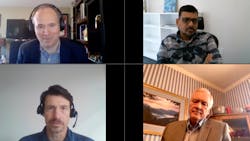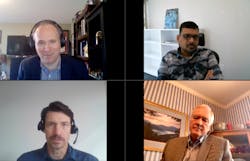Making the Leap: Pulling Legacy Systems into the IIoT Era
The value proposition for replacing functional industrial systems is practically non-existent due to the expense associated with purchasing higher functioning versions of those units, but there are things that manufacturers can do to connect those legacy units into a hierarchical IIoT system. This is increasingly challenging in small- and medium-sized companies.
As a part of the Motion Control and Motor Association (MCMA) Technical Conference, a panel of engineering specialists discussed how manufacturers can bring legacy systems into the IIoT era. Not only is IIoT an expensive concept, but it is also an expansive one, and sometimes those two things keep companies from adopting these technologies.
“When we start talking the IoT concept, the whole digital machine, the digital twin—this can be daunting to a lot of customers,” said Craig Nelson, senior product marketing manager at Siemens Industry Inc. “The thing is, you just need to get started—even if it’s small.”
The starting point is data. IIoT is a data-driven concept, so gathering, storing and analyzing actionable data is the logical first step. Analyzing specific machine parameters can show KPI, quality issues and cost-cutting measures. Prabhakar Gowrisankaran, VP of engineering and strategy at Performance Motion Devices, echoed the idea that companies need to start small by isolating a few variables they can change or optimize.
“Over time, you’ll come up with more variables that you can measure and see,” Gowrisankaran added.
Expense, time and training all contribute to the global manufacturing industry’s reluctance to adopt IIoT-enabled infrastructures, but in the wake of shelter-in-place orders due to COVID-19, that might force the industry into change.
“Perhaps the struggle with trying to do the minimum that is necessary remotely will cause things to flow more freely through the broad spectrum,” said Mike Lunsford, president of Dart Controls. “The conservative folks now will realize they have to step outside their comfort zone perhaps.”
“Machines can share data, and there’s a common framework for presenting it and analyzing it,” said Gowrisankaran. “That’s where I see a little bit of gaps—everyone is doing it their own way of implementing it—but I think we’re moving in the right direction.”
About the Author

Marie Darty
Group Multimedia Director, Engineering & Manufacturing
Marie Darty is a digital media professional currently serving as the group multimedia director for the Manufacturing & Engineering Group at Endeavor Business Media. A graduate of Jacksonville State University, she earned her Bachelor of Arts in digital communication with a concentration in digital journalism in December 2016. In her current role, she leads the strategy and production of multimedia content, overseeing video series planning and editing. Additionally, she oversees podcast production and marketing of multimedia content.

